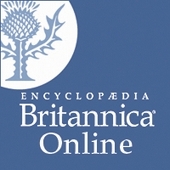Mechanisms
Participatory Audience Engagement
Part I, "Mechanisms," looks at the various social, economic, and material factors that work together to create the environment for today's social media. It is comprised of five essays, beginning with Jay Rosen's (2012) foundational text, "The People Formerly Known as the Audience." Rosen argued that
[t]he people formerly known as the audience are those who were on the receiving end of a media system that ran one way, in a broadcasting pattern, with high entry fees and a few firms competing to speak very loudly while the rest of the population listened in isolation from one another—and who today are not in a situation like that at all. (p. 13)
His short essay is a plea to the media industry to consider how the public participates actively in media today as a result of technological affordances, and while that should be welcomed by industry, it is regardless critical for this new conceptualization of the audience to be understood (p. 15). Rosen's essay contributes to the work of defining audience in participatory culture as co-creators and engaged users of all forms of media.
Social Sharing
In his essay "Sharing Nicely: On Shareable Goods and the Emergence of Sharing as a Modality of Economic Production," Yochai Benkler (2012) argued that "social sharing and exchange is an underappreciated modality of economic production, alongside price-based and firm-based market production and state-based production, whose salience in the economy is sensitive to technological conditions" (p. 18). Benkler believes that many policy implications arise from a lack of understanding of social sharing, particularly as technological advances force our hand around regulation of shared cultural productions such as music (p. 21). Social sharing is a mechanism by which social media operates, and its counterposition to a market-based, hierarchical economy often leads to counterproductive policymaking (p. 22).
Open Source
Siva Vaidhyanathan's (2012) essay, "Open Source as Culture/Culture as Open Source," contributes to the volume a discussion of the tension between open-source models and the proprietary model of production. He argued that as proprietary software development models have been powerful, they have fostered copyright and other intellectual property laws that can stifle creativity in product design and "can generate suboptimal levels of investment, asset allocation, and policy choices" (p. 26). As Benkler above discussed, a greater understanding of an open-source model of peer production is needed in order to effectuate better policy.
Web 2.0
Tim O'Reilly (2012) wrote that his essay, "What is Web 2.0?: Design Patterns and Business Models for the Next Generation of Software," was "an attempt to clarify just what we mean by 'Web 2.0'" (p. 32). He articulated seven core tenets of "2.0-ness" in software companies: (1) they treat "the web as a platform;" (2) they "harness collective intelligence"; (3) they have "competent database management"; (4) they have ended software release cycles; (5) they have light programming models; (6) they have moved beyond offering software for a single device only; and (7) their products offer "rich user experiences" (p. 33–49). O'Reilly closed the essay by asking readers to test a company's Web 2.0-ness against these tenets (p. 51). I found this essay, with its own user-friendly design, to be extraordinarily helpful in adding a theoretical frame to a ubiquitous term.
For a demonstration of the movement from Web 1.0 to Web 2.0, click on the images to the right. Web 1.0 is evidenced in Encyclopedia Britannica Online, while Wikipedia showcases the 2.0-ness of collective intelligence (p. 33).
Collaboration
In the final essay in this section, "What is Collaboration Anyway?," Adam Hyde et al. (2012) began in much the same fashion as the others, stating that "[i]n an attempt to avoid the misuse of the term 'collaboration' we will try to examine what constitutes collaboration in digital networks and how it maps to our previous understanding of the term" (p. 53). The authors offered two theoretical frameworks for discussion of collaboration. First, a set of "criteria for collaboration" was provided that "assess the strength of a collaboration": a series of questions about "intention, goals, self-governance, coordination mechanisms, property, knowledge transfer, identity, scale, network topology, accessibility, and equality" (p. 60–62). Second, the authors offered a "continuum set," with case studies that exemplify "weak" to "stronger" to "intense connections" in collaborations (p. 62–66). These theoretical frameworks offer readers a pathway to examine how collaborative networked environments truly are.
The "Mechanisms" section is by far the strongest and deepest content area of the book. It successfully delivers an in-depth yet accessible collection of essays on the cultural practices that embody social media use and shape its technological tools and platforms. These essays are critical to a basic understanding of the social transformation that is taking place in social media, from cultural consumption by media audiences to participatory engagement of users.

